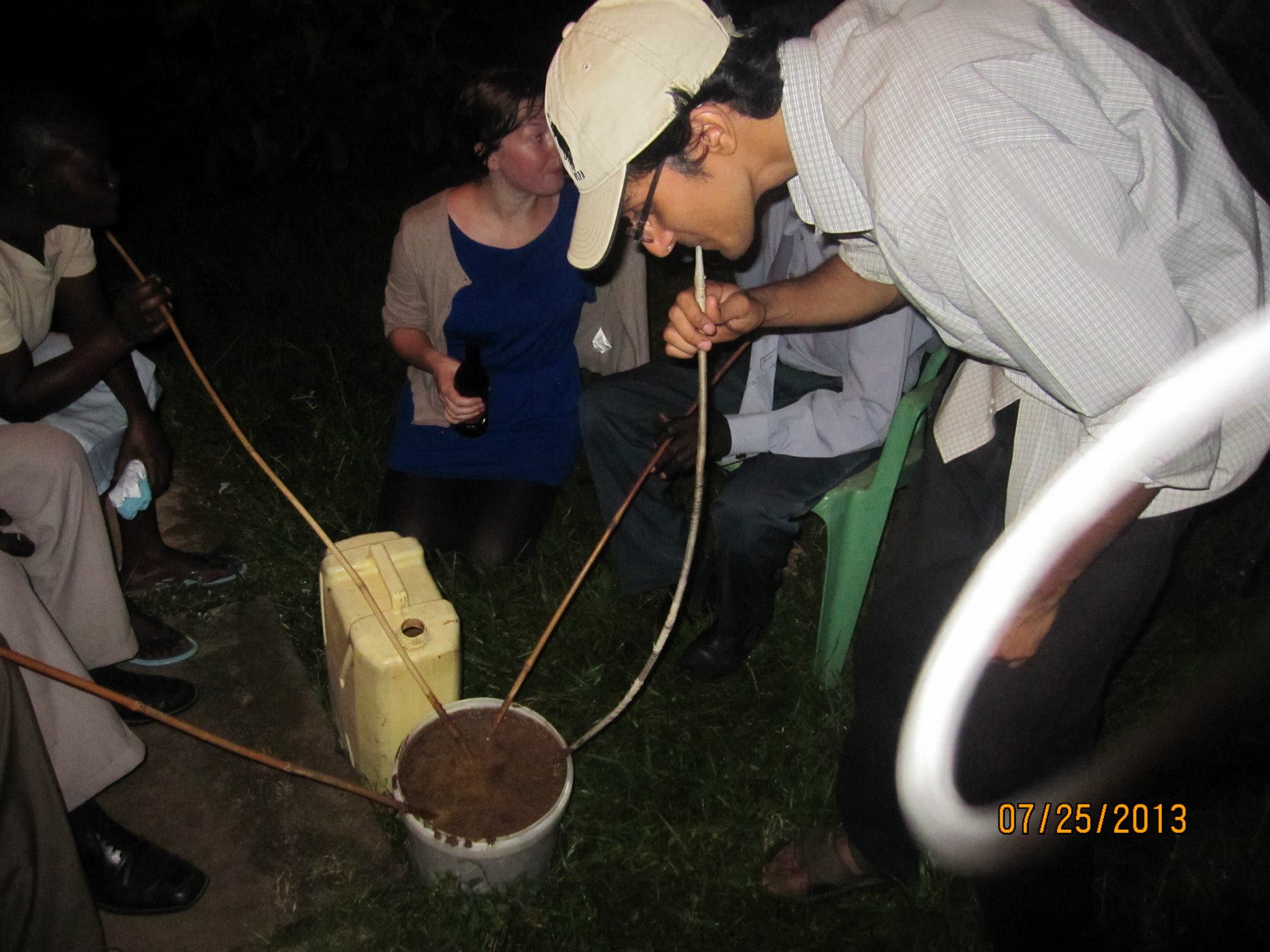-
Island Sunset
 Sunset at Nanoose Bay, Vancouver Island
Sunset at Nanoose Bay, Vancouver Island -
Memorable Intros
Among the Coen Brothers’ many strengths: scripting quirky, curious entrances for their ridiculous characters, even those sparingly used. The above tune from one of my favorites, Jesus sliding into frame in ‘98’s The Big Lebowski.
Kind of makes me want to go bowling.
A Measures admission to kick off the short week ahead.
Taxes in the rearview, a federal election underway, and an adventure to Port City on the horizon.
-
Weekly Picks – April 20, 2025
 Credit (left to right): Robert Berdan; Bloomberg/ Getty Images; Schmidt Ocean Institute
Credit (left to right): Robert Berdan; Bloomberg/ Getty Images; Schmidt Ocean InstituteA couple of videos that I wanted to share this week, from years ago but still relevant:
- Gideon Levy on the Two-State Solution
- How Israelis Live So Easily With Occupation (full keynote can be found here)
This week’s collection:
- Bibles, bullets and beef: Amazon cowboy culture at odds with Brazil’s climate goals | The Guardian
- The Animals That Exist Between Life and Death | Nautilus
- Across war zones, targeting healthcare has become a strategy, not an accident | Global Voices
- Unspoken Oppression – The Twin Hells of School and Work | CounterPunch
- How People Are Really Using Gen AI in 2025 | Harvard Business Review
- Team captures first confirmed footage of a baby colossal squid | Phys.org
- Fashionable Nonsense | The Baffler
- The ancient empire that civilization forgot | National Geographic
Find out how these lists are compiled at The Explainer.
Introductory excerpts quoted below. For full text (and context) or video, please view the original piece.
-
Arborous Myths

It is a false set of stories told on campus tours of the University of British Columbia. That one day, students chose to uproot a tree and replant it, upside down. Their backgrounds and motivations change with each retelling, but the result is the same: the tree, seen above, adapted to its new orientation by regrowing branches and leaves out of its exposed root system. Its top, meanwhile, embedded new stems into the soil below, so it could draw water and continue its existence unbothered.
Looking up at this tangled mess, you may be fooled into thinking the anecdotes are plausible.
Instead, what you are gazing at is a particularly knotted Camperdown Elm. A Scottish cultivar known for its unique trunk formations. This one is situated on Agriculture Road surrounded by the Chemistry and Physics Buildings, the Indian Residential School History and Dialogue Centre, and the Irving K. Barber Library. In case you feel like dropping by and relaxing in its shade. (Benches provided.)
Beautiful and remarkable in its own way, without need for tall tales. No less a gem among its more familiar company.
-
Weekly Picks – April 13, 2025
 Credit (left to right): Public Domain; Samantha Mash; ariel rosé
Credit (left to right): Public Domain; Samantha Mash; ariel roséThis week’s collection:
- Liminal Border Situation | Eurozine
- Noblesse Without Oblige | Dissent
- Friends with benefits? The country still in thrall to the Wagner Group | 1843
- The lonely life of a glyph-breaker | Aeon
- Intelligence Evolved at Least Twice in Vertebrate Animals | Quanta Magazine
Plus, for Astronomy aficionados:
Find out how these lists are compiled at The Explainer.
Introductory excerpts quoted below. For full text (and context) or video, please view the original piece.
-
On the Nature of War
Today, I dwell on international conflict.
War or massacre; invited or imposed. Of the immeasurable futility and inexcusable senselessness of spending prohibitive amounts of capital to directly or indirectly enable mass killing. As states around the world look to reassure their citizens of their safety by increasing military budgets in lieu of shifting hegemons, while neglecting treatment of systemic cancers. That ever-present, seemingly inescapable reality which keeps peace at bay in the name of “national interests”.
The most universally acknowledged, secure, and fortified border remains a fictitious construction. Nature cares not where lines on a map are drawn. Social ills exported or facilitated elsewhere will find their way in. Those with power would be wise to use these moments to widen their ambition for truly transformative projects that restructure our collective political economy, rather than continue and bolster cycles of conflict and oppression.
The above composition is from a protest album composed in the lead-up to the 2003 Iraq War, whose architects escaped accountability. Enjoying their lives to this day amongst the same elite that continue to dictate policy. A common historical thread.
Today, I dwell in doubt.
“National boundaries are not evident when we view the Earth from space. Fanatical ethnic or religious or national chauvinisms are a little difficult to maintain when we see our planet as a fragile blue crescent fading to become an inconspicuous point of light against the bastion and citadel of the stars. […]
A new consciousness is developing which sees the Earth as a single organism. And recognizes that an organism at war with itself is doomed. We are ONE planet.”
– Carl Sagan in “Who Speaks for Earth?”, Episode 13 of Cosmos: A Personal Voyage
Here’s to a future where we default to compassion for all our fellow humans.
-
Rural Ugandan Brew
 Credit: Jenny Z.
Credit: Jenny Z.A moment from a late night in the summer of 2013, just outside (the unofficially but affectionately named) “Mzungu House”. A small hut mere yards away from the Busolwe hospital and temporary residence to two doctors-in-training from Aarhus.
Busolwe, a village near Mbale in Eastern Uganda, was my home for four months while I participated in an international learning exchange (primarily to support rural literacy initiatives and to learn from a community of local leaders who were passionate about instilling in youth a culture of reading and writing).
My colleague and I had been invited by our Danish friends to an evening of shared meals and stories, the latter not least a chance to debrief our most eventful days spent in Uganda. We rarely had a chance to connect with them, the only other foreigners who were staying in the remote village alongside us for many months. They worked long hours at the hospital, while our time was dedicated to the local library and schools, all spread out over a great distance.
On this weekend night, we emerged much later than anticipated. As we walked into the field and took in the fresh air, a group of locals sitting in a circle motioned to us. Each held a thin pipe with one end dipped into a large bucket on the ground. They asked us to join them as they drank from their lengthy wooden straws. So we found ourselves reveling outdoors, starlight replacing candlelight.
-
Weekly Picks – April 6, 2025
 Credit (left to right): Cory Doctorow; Cristina Spanò / Grist; Dobrovizcki / Shutterstock
Credit (left to right): Cory Doctorow; Cristina Spanò / Grist; Dobrovizcki / ShutterstockThis week’s collection:
- About That: The bizarre way Trump’s team calculated reciprocal tariffs | CBC
- The Fire This Time | Counterpunch
- Zine Archives Preserve Trans Survival and Storytelling | Atlas Obscura
- Regime Change in the West? | London Review of Books
- Everything you need to know about bird flu | Knowable Magazine
Find out how these lists are compiled at The Explainer.
Introductory excerpts quoted below. For full text (and context) or video, please view the original piece.
Also, this recently published series (10 articles) is a good primer on the global context surrounding critical minerals and their place in our future:
- Unearthed: The Mining Issue | Grist Magazine
-
PG Pulp Mills

A new feature on the blog: the weekly photo! I have a large archive and will be sharing some of the clicks on a regular basis moving forward.
Today’s picture: Canfor’s pulp mill operations, just east of the main city core, as seen right after takeoff from Prince George Airport. The mills are contributors, alongside local wastewater treatment plants and landfills, to a distinctly rotten odor that tends to waver between “barely noticeable” and “oppressive”.
This article has more on the factors at play, for anyone curious about Prince George’s olfactory profile. This city rarely gets a comment on this blog; why not start local?
Canada, for those who did not know, is home to nearly a tenth of the land covered by forests globally. Big business for wood products and all associated industries. Incidentally, PG is hosting a provincial conference on forestry later this week. The ongoing trade war likely a key talking point for a struggling sector.
-
Weekly Picks – March 30, 2025
 Credit (left to right): Noel Celis/ AFP via Getty Images; Maria Medem; Eid Suleiman
Credit (left to right): Noel Celis/ AFP via Getty Images; Maria Medem; Eid SuleimanThis week’s collection:
- “It Is Neither Death, Nor Suicide” | In These Times
- My Fifteen Minutes As a Palestinian | The Progressive
- The Prehistoric Psychopath | Works in Progress
- Why uncertainty can be a superpower | New Humanist
- Duterte’s bloody drug war was really a war on the poor | Salon
Find out how these lists are compiled at The Explainer.
Introductory excerpts quoted below. For full text (and context) or video, please view the original piece.